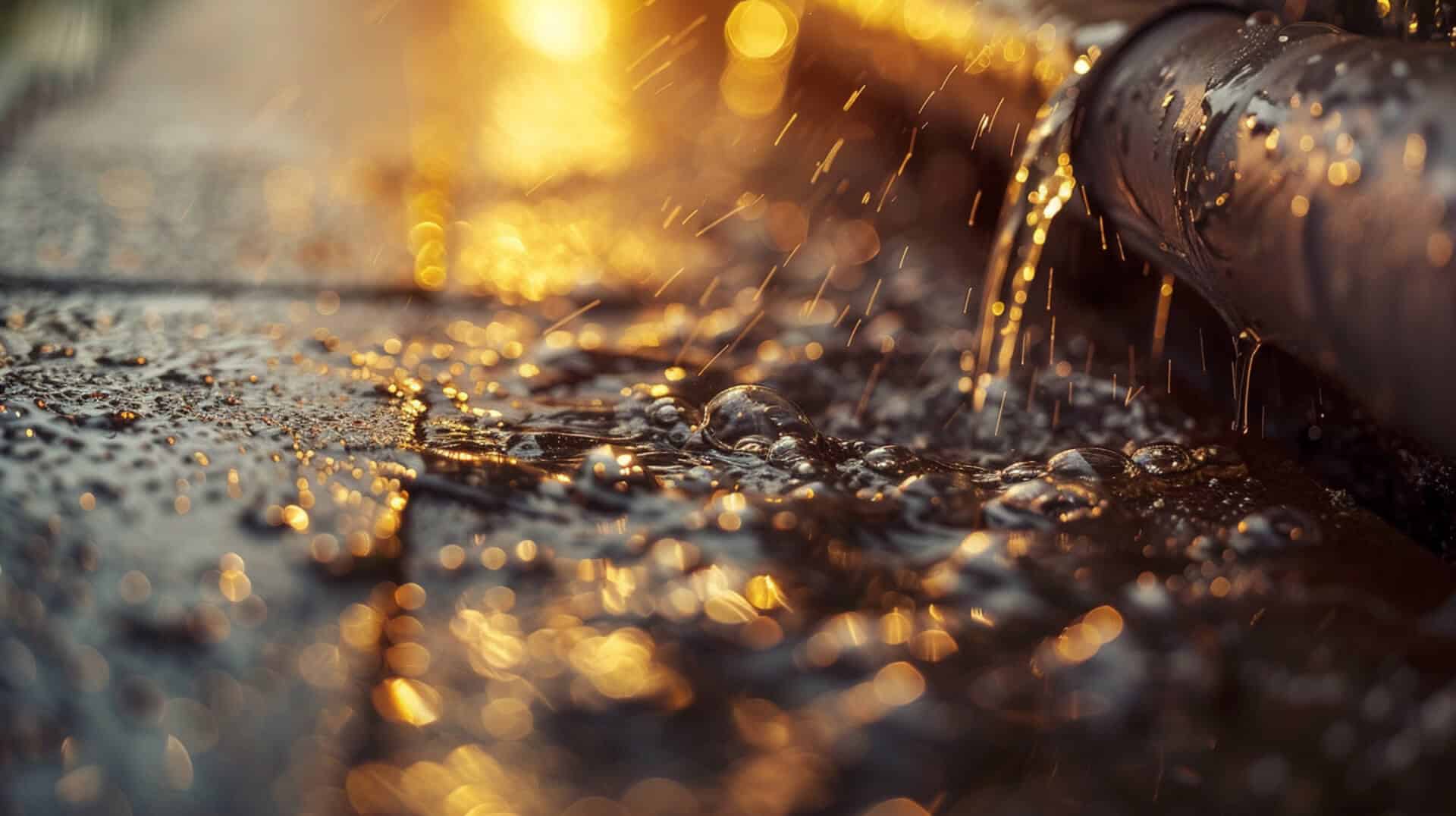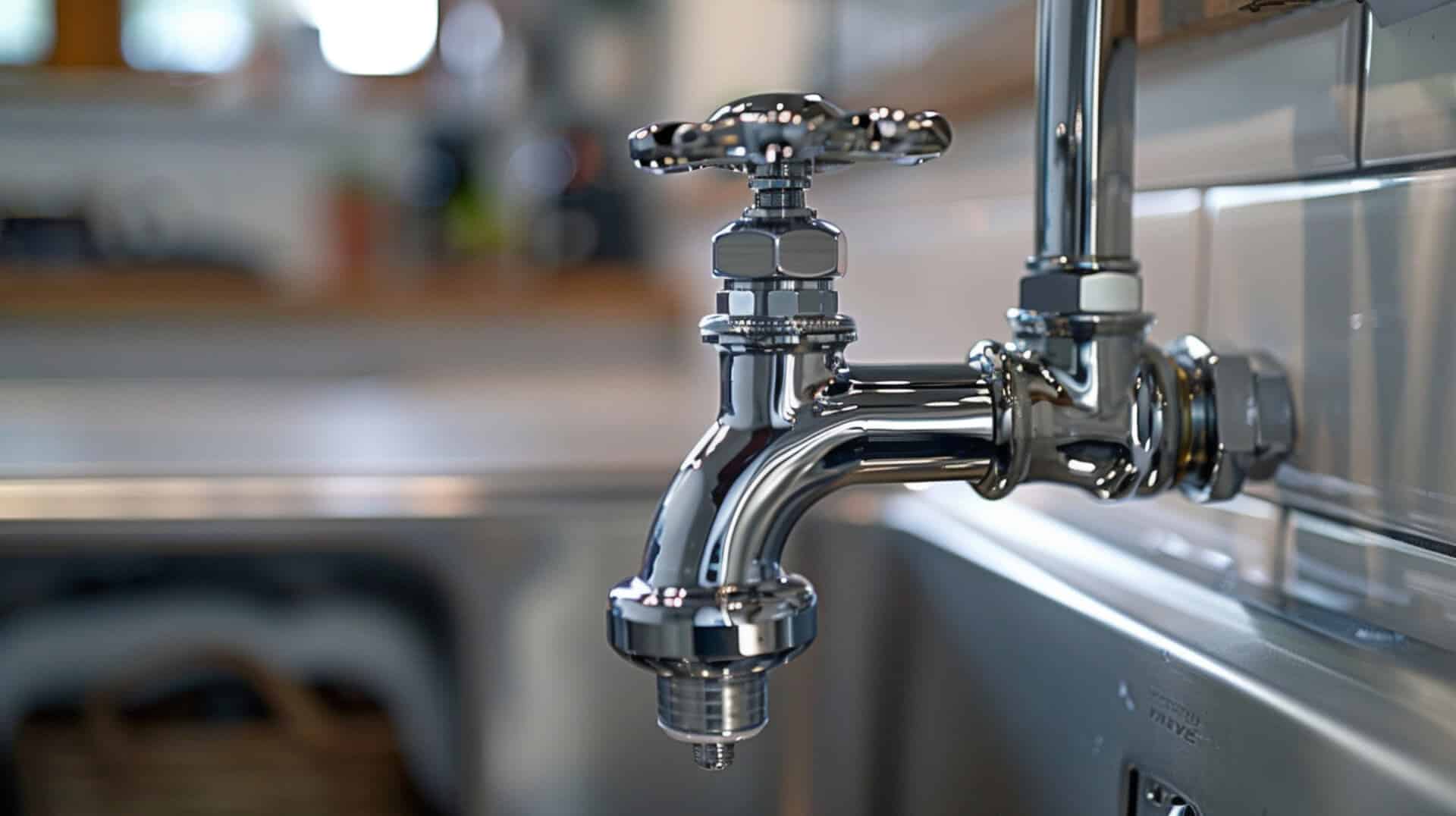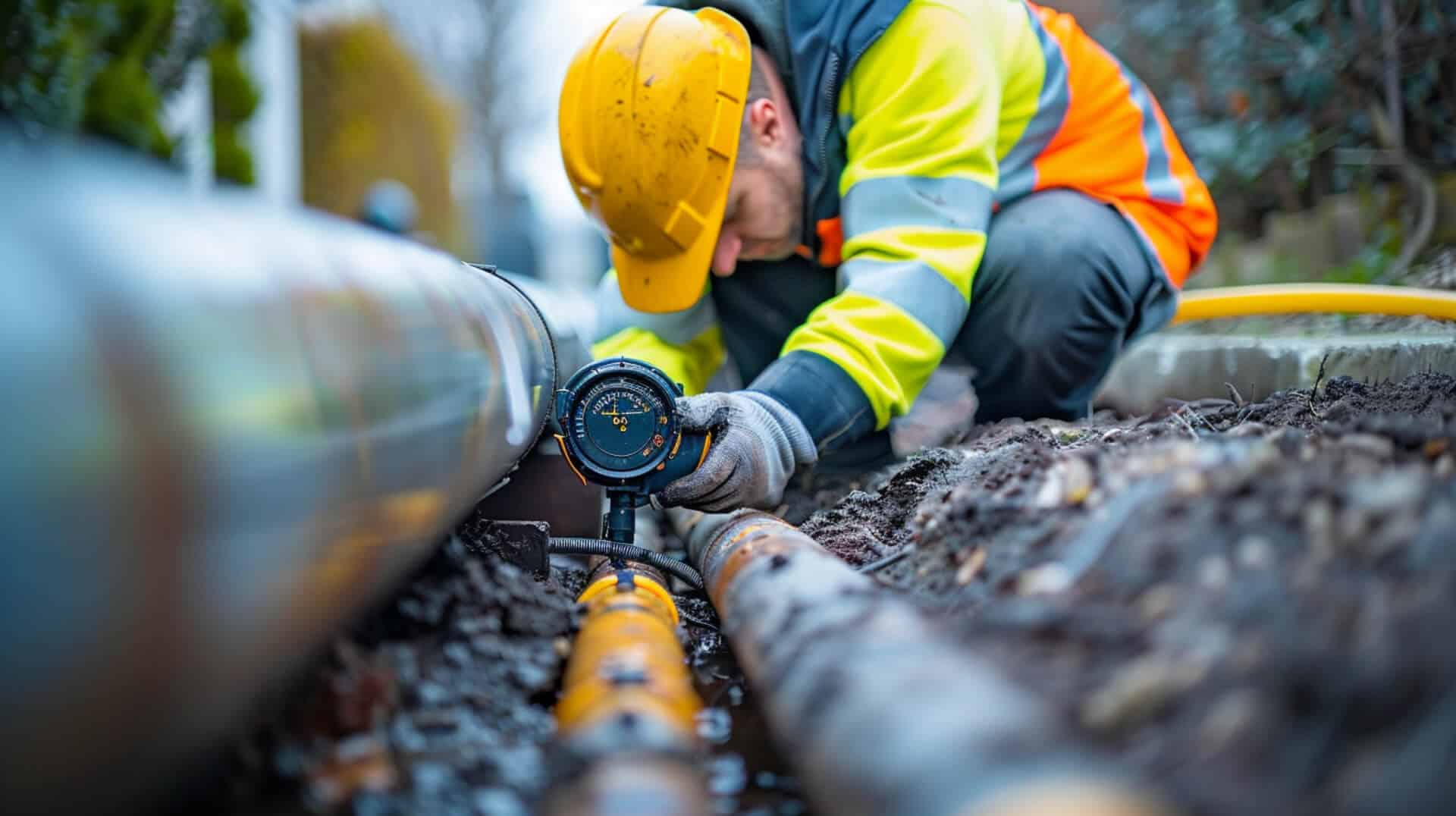 What Is A French Drain And How Does It Work
What Is A French Drain And How Does It Work
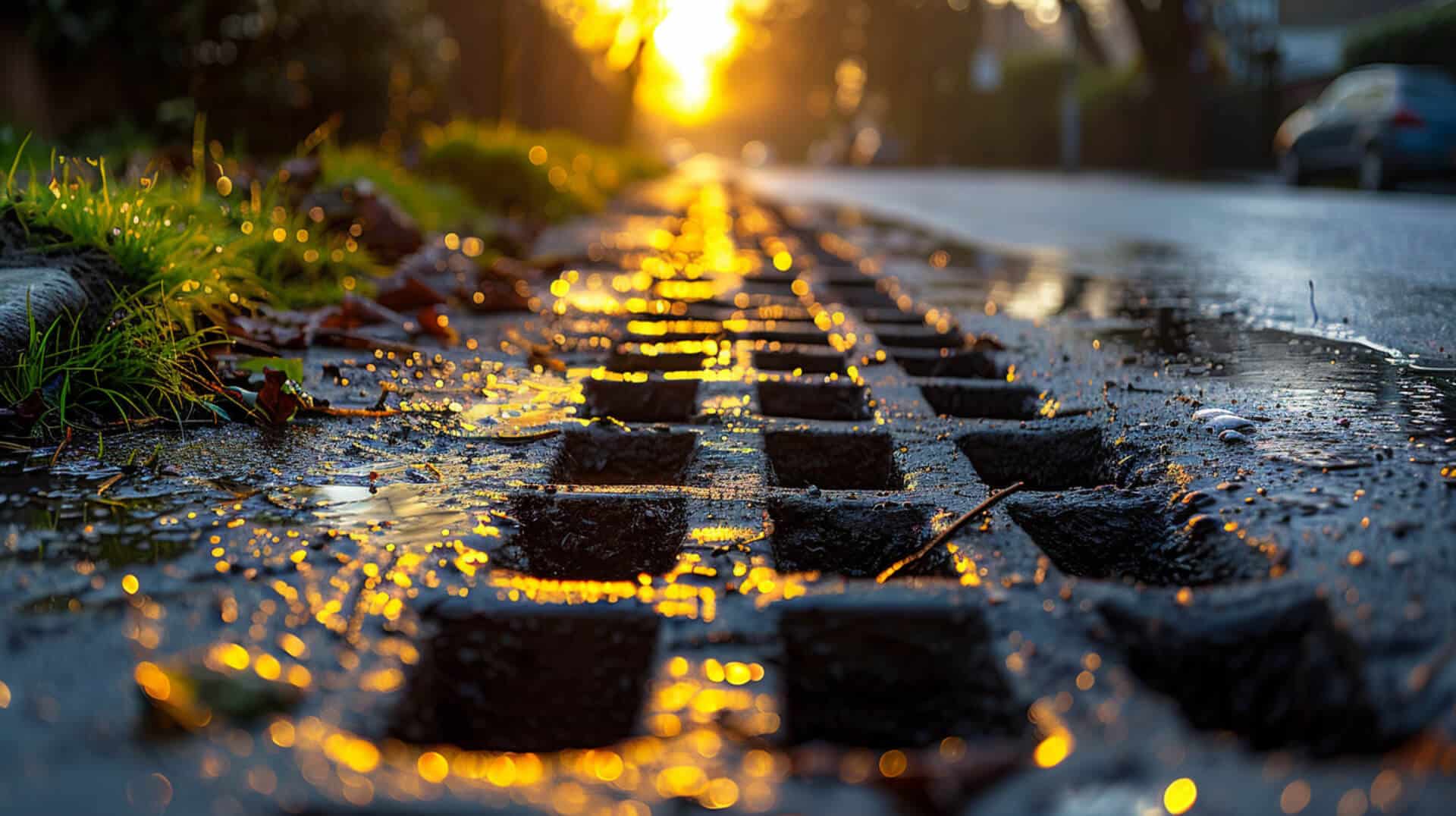
When you’re facing issues with excess water in your landscape, understanding the basics of a French drain can be the key to effective water management. A French drain is a simple, yet ingenious solution for redirecting subsurface water. It consists of a trench filled with gravel and a perforated pipe that channels water away from saturated areas.
Origin and Development of French Drains
The concept of the French drain dates back to 1859, credited to Henry Flagg French from Massachusetts. French’s innovation in agricultural and foundation drainage has since become a staple in effective water management practices.
Comparing Drainage Solutions
Unlike surface drainage solutions, French drains are designed to address water accumulation below ground. This subsurface method is gravity-driven, making it distinct from visible trench drains that handle surface water.
Effective Employment of French Drains
French drains are most effective in scenarios where water pooling poses a risk to structural foundations or causes landscape erosion. They are also employed in agricultural fields to manage excess water and support healthy soil conditions. By understanding when and how to use a French drain, you can protect your property from water-related damage and maintain a healthy landscape.
The Anatomy of a French Drain: Components and Construction

When considering the installation of a French drain, understanding the components and the construction process is essential. A French drain typically consists of a trench filled with gravel and a perforated pipe, designed to redirect subsurface water.
Required Materials for a French Drain
To construct a French drain, you will need:
- Perforated Pipe: This pipe allows water to enter the drain from the surrounding soil.
- Gravel: Medium-sized, angular gravel is preferred for stability and effective water flow.
- Non-Woven Landscape Fabric: Also known as geotextile, it philtres debris, preventing clogs within the system.
- Optional Decorative Aggregate: For aesthetic concealment of the drain.
Excavation and Preparation of the Trench
The trench for a French drain must be excavated with a slope of at least 1% to ensure proper water flow. It is critical to avoid underground utilities during this process. The trench should be lined with geotextile fabric before adding gravel and the perforated pipe.
Importance of Slope in French Drain Design
The slope is a crucial element in the design of a French drain. It ensures that gravity effectively draws water through the pipe, away from areas where pooling could cause damage.
Interaction of Components in Water Redirection
The components of a French drain work in unison to redirect water:
- Water seeps into the trench, passing through the gravel.
- The perforated pipe then collects the water.
- Finally, the water is channelled away from the property, following the path of least resistance facilitated by the slope.
By adhering to these construction principles, a French drain can provide an effective solution for managing water and protecting your property.
The Purpose and Benefits of Installing a French Drain

A French drain serves as a strategic solution for managing excess water in various settings, from residential properties to agricultural fields. Its design is simple yet effective, providing multiple benefits that extend beyond mere water redirection.
Effective Water Management
The primary purpose of a French drain is to prevent water pooling and mitigate foundation damage. By channelling water away from structures, French drains reduce the risk of water infiltration that can lead to costly repairs.
Preservation of Landscape and Prevention of Erosion
French drains play a significant role in landscape preservation:
- They prevent erosion by controlling the flow of water, which can wash away soil and plants.
- The system maintains the integrity of the landscape by providing a path for water to flow, avoiding the disturbance of established gardens and features.
Support for Agricultural and Structural Integrity
In agricultural settings and around retaining walls, French drains offer crucial support:
- They help to stabilise soil moisture levels, which is beneficial for crop growth and health.
- For retaining walls, French drains alleviate hydrostatic pressure that can cause structural damage over time.
Environmental Advantages
The environmental benefits of French drains include:
- Minimising toxic runoff by redirecting water flow through cleaner paths.
- Supporting the ecosystem of rain gardens by providing consistent moisture levels.
- Contributing to soil nutrient stabilisation through improved water distribution.
By incorporating a French drain into your property’s landscape, you can achieve effective water management while also reaping the benefits of erosion control, structural support, and environmental sustainability.
Planning and Design Considerations for French Drains
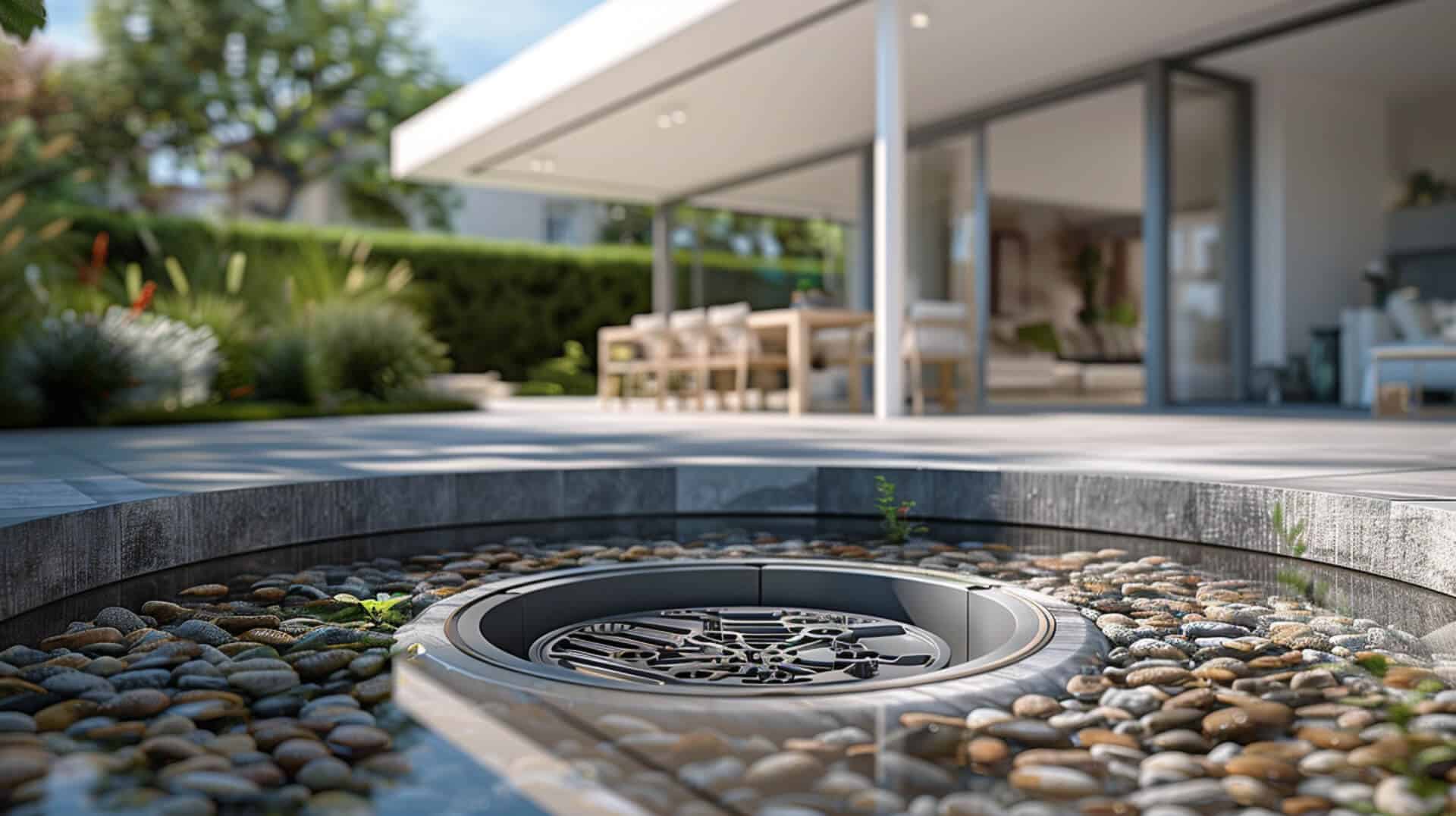
When integrating a French drain into your landscape, careful planning and design are paramount to ensure the system’s effectiveness and longevity. The following considerations are crucial in the design process:
Determining Optimal Placement
The placement of a French drain is determined by:
- Identifying the landscape’s lowest point to facilitate natural water flow.
- Ensuring the endpoint, such as a dry well or rain garden, is suitable for water dispersion.
Avoiding Underground Utilities
Prior to excavation, it is essential to:
- Consult local utility maps or services to locate and avoid underground utilities.
- Plan the drain’s path to minimise the risk of damaging existing infrastructure.
Selecting Appropriate Materials
The choice of materials impacts the drain’s efficiency:
- Gravel size and type should allow for optimal water flow while providing stability.
- The perforated pipe must be sized correctly to handle the expected water volume.
Tailoring Design to Application
The design of a French drain is influenced by its intended use:
- For areas with heavy water flow, a larger pipe and more robust filtration may be necessary.
- In agricultural settings, the system must accommodate specific soil and crop requirements.
By addressing these design considerations, you can ensure your French drain functions as intended, providing effective water management for your property.
Installation Process: Step-by-Step Guide
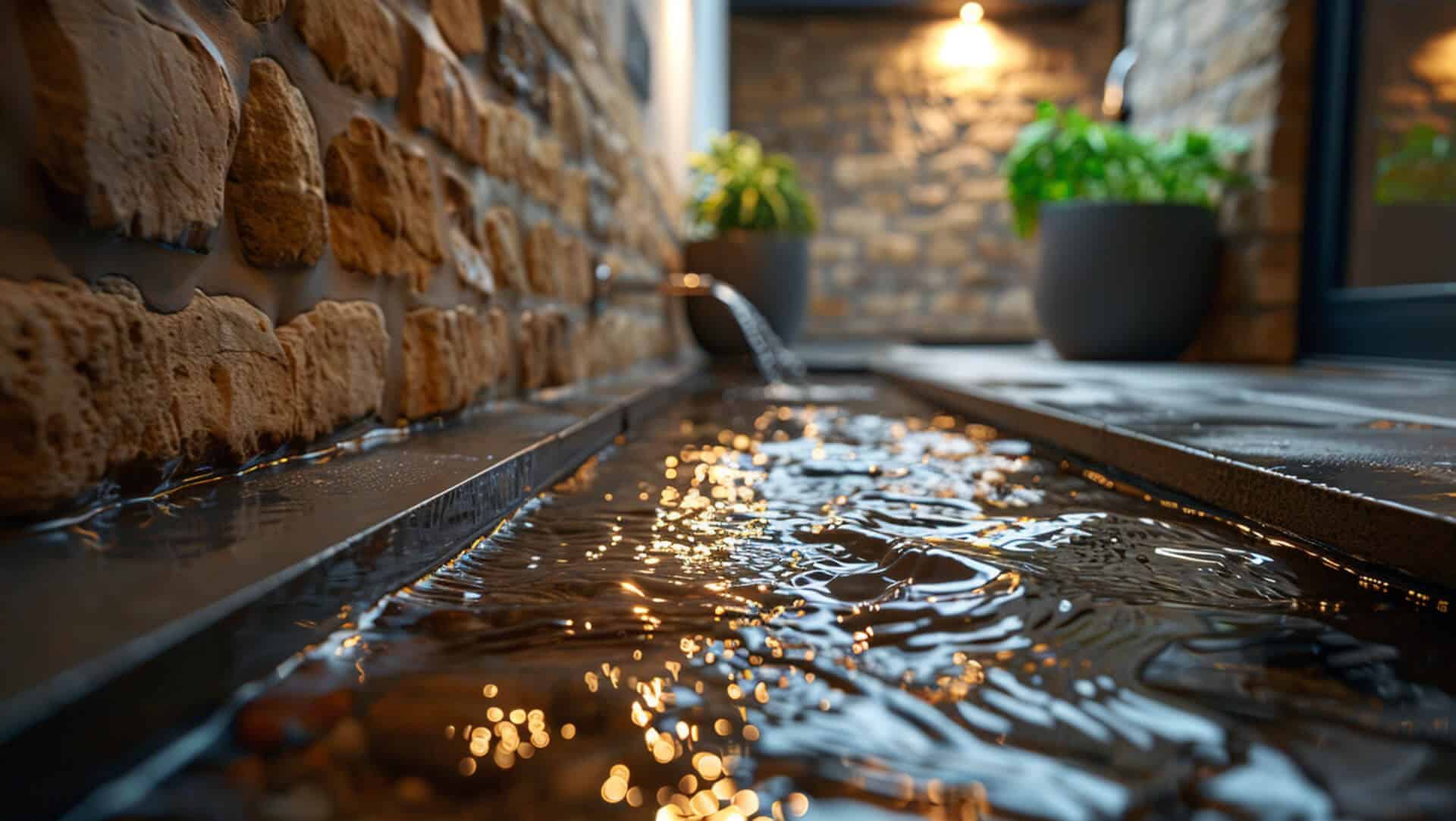
The installation of a French drain is a methodical process that, when done correctly, can significantly improve water management on your property. Here is a guide to the key steps involved:
Preliminary Steps for French Drain Excavation
Before digging begins, it is important to:
- Plot the Site: Identify the path of the drain, ensuring it follows the natural slope of the land.
- Check for Utilities: Contact local utility companies to mark any underground lines to avoid during excavation.
Digging the Trench
For the trench excavation, you will need:
- Tools: A trencher or a shovel can be used, with the trencher providing a more efficient means for larger projects.
- Depth and Width: The trench should typically be around 6 inches wide and 18 to 24 inches deep, depending on the application.
Importance of Geotextile Fabric
Lining the trench with geotextile fabric is crucial as it:
- Philtres Soil: Prevents the mixing of soil with gravel, maintaining the drain’s efficacy.
- Prevents Clogging: Reduces the likelihood of sediment build-up within the pipe.
Placement of Gravel and Perforated Pipe
When placing the gravel and pipe:
- Gravel Base: Lay a layer of gravel at the bottom of the trench before installing the pipe.
- Pipe Positioning: Ensure the perforated pipe is placed with the holes facing down to facilitate proper water capture.
- Backfilling: Cover the pipe with more gravel, then wrap the geotextile fabric over the top before backfilling with soil.
By following these steps, you can instal a French drain that effectively manages water and protects your property from potential water damage.
Cost Analysis: DIY vs. Professional Installation
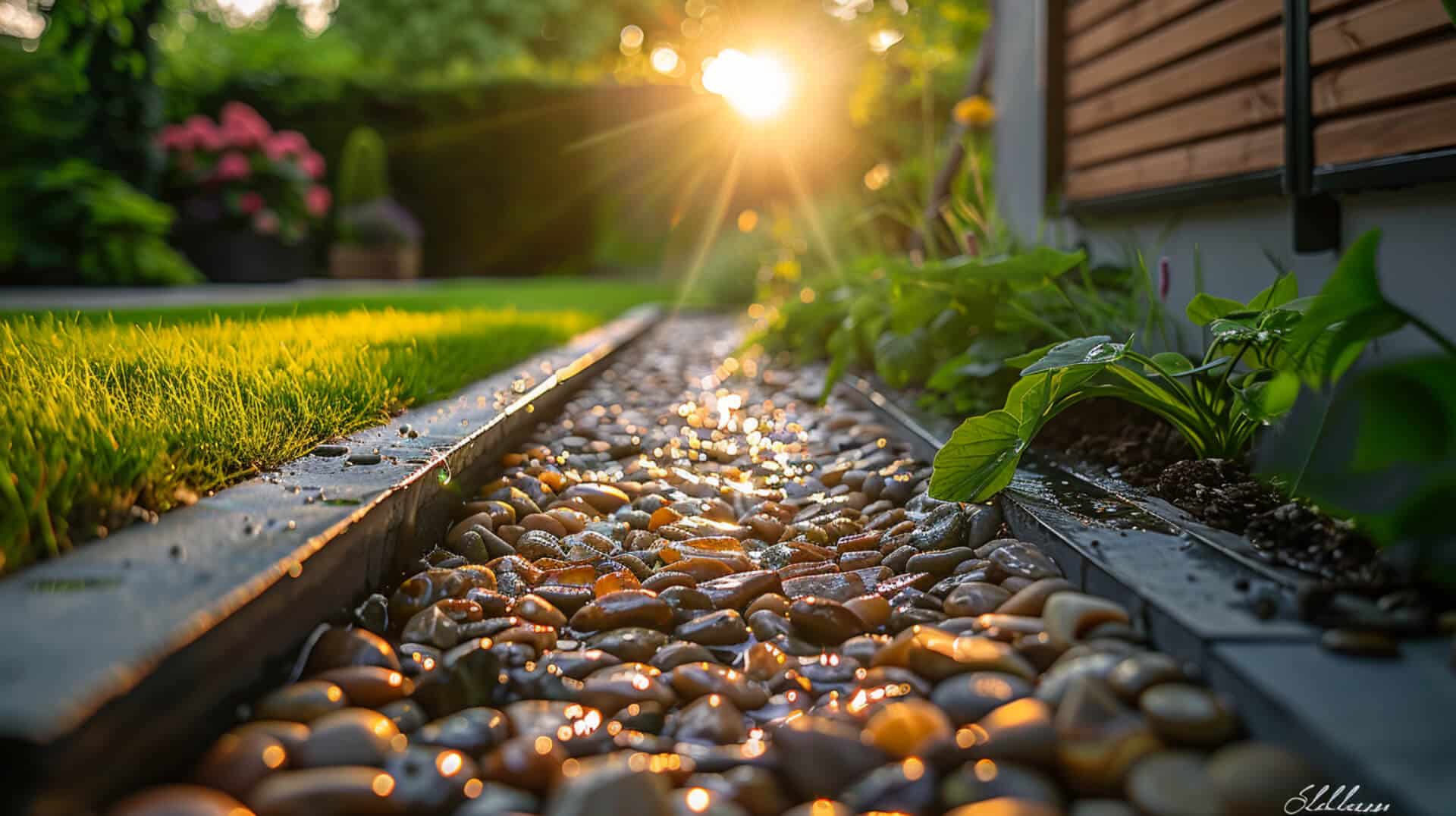
Evaluating the cost of installing a French drain is a critical step in the planning process. The total expense can vary widely, influenced by several factors.
Factors Influencing French Drain Installation Costs
The cost of a French drain system is affected by:
- Labour: The complexity of the project and the need for professional services.
- Materials: Costs for gravel, perforated pipe, and landscape fabric.
- Size: The length and depth of the trench required for adequate drainage.
Decision Making: DIY Project or Professional Hire
Property owners should consider:
- Skill Level: Assess your proficiency with excavation and plumbing tasks.
- Project Scale: Larger or more complex drainage issues may necessitate professional expertise.
- Risk Assessment: The potential for inadvertently damaging underground utilities can add unforeseen costs.
Potential Savings with DIY Installation
A DIY approach may offer savings on:
- Labour Costs: By undertaking the project yourself, you eliminate the need for paid labour.
- Material Selection: Direct purchase of materials may reduce overall expenses.
When to Consult a Professional
Professional consultation is recommended when:
- Regulatory Compliance: Knowledge of local building codes and regulations is required.
- Complex Drainage Issues: Professionals can provide solutions for challenging landscapes or severe water management problems.
By carefully considering these factors, you can make an informed decision on whether to embark on a DIY project or engage a professional for your French drain installation.
Maintenance and Troubleshooting for French Drains
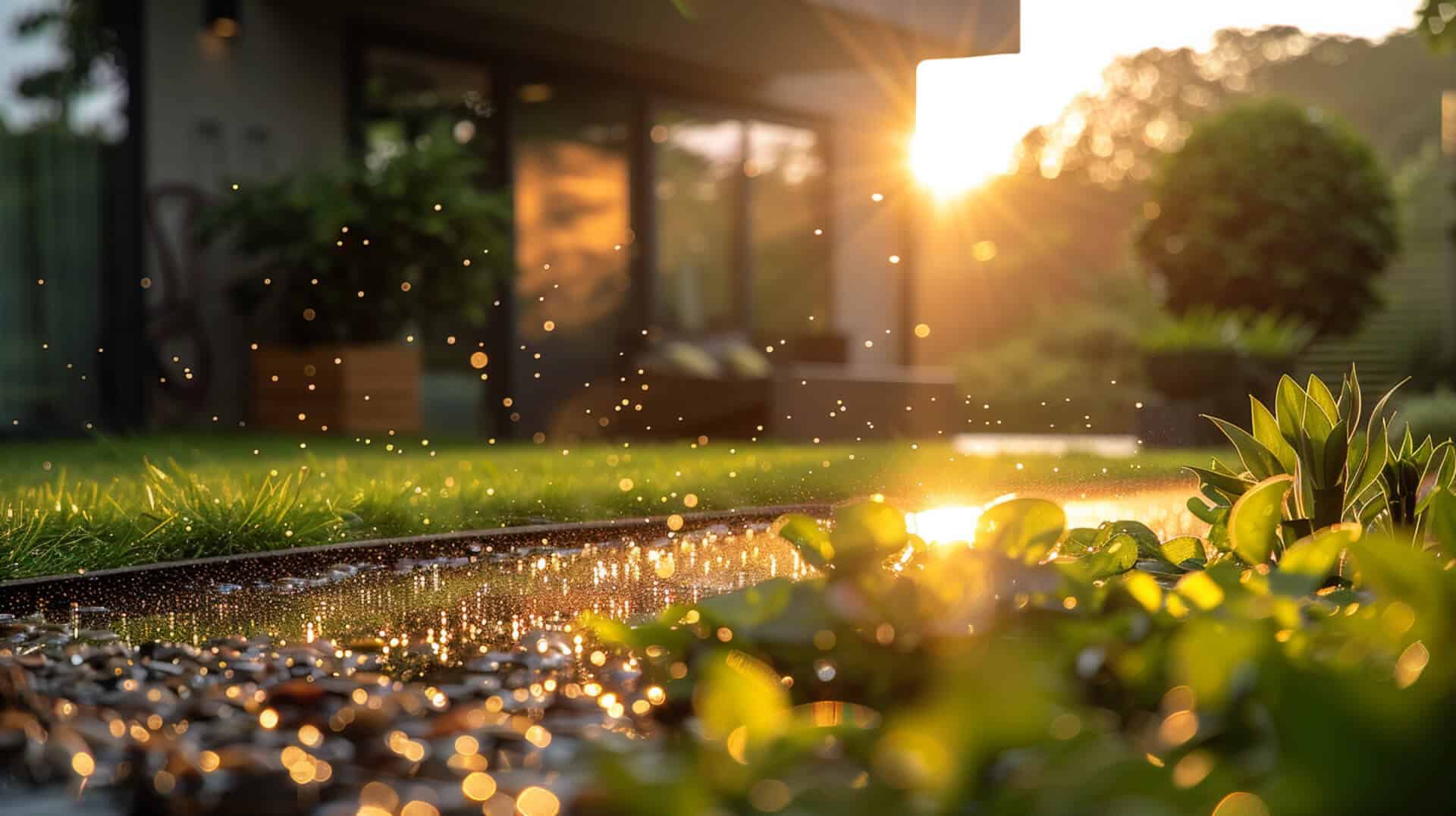
To ensure the longevity and effectiveness of a French drain, routine maintenance is a necessity. Property owners should be vigilant in identifying and addressing common issues that may arise with their drainage systems.
Routine Maintenance for French Drains
Annual inspections are crucial and should include:
- Clearing Debris: Check for and remove any debris that could obstruct water flow.
- Inspecting Pipe Integrity: Look for signs of damage or collapse in the pipe structure.
- Evaluating Gravel and Fabric: Ensure that the gravel is not overly compacted and the fabric is not torn or clogged.
Identifying Common Issues
Property owners may encounter:
- Slow Drainage: This could indicate a blockage or an issue with the slope or pipe gradient.
- Visible Water Pooling: Persistent pooling above the drain might suggest a system overload or clog.
Signs of Necessary Repair or Replacement
A French drain may need attention if:
- Unusual Wetness in Landscape: Saturated areas near the drain can signal a breach or blockage.
- Odour or Sinkholes: These are serious indicators that the underground structure of the drain is failing.
By conducting regular maintenance and being attentive to these signs, you can address issues promptly, ensuring your French drain continues to function as an efficient water management solution.
Alternatives to French Drains: Pros and Cons
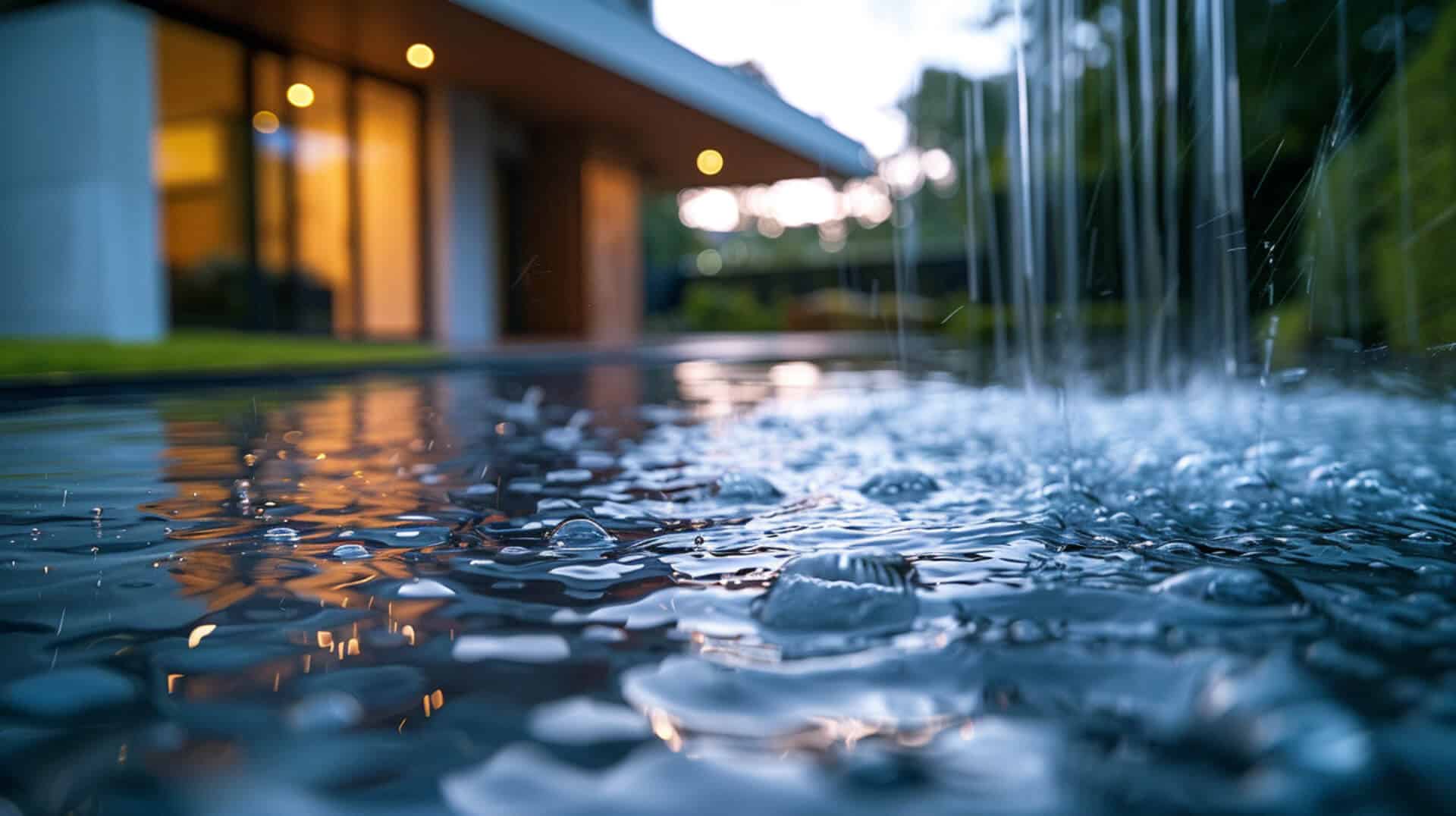
Exploring alternatives to French drains is important for property owners to find the most suitable solution for their water management needs. Each option comes with its own set of advantages and potential drawbacks.
Trench Drains vs. French Drains
trench drains, which are visible surface-level channels, offer an alternative to the subsurface French drain:
- Visibility: Trench drains are visible, which may affect landscape aesthetics, unlike the concealed nature of French drains.
- Functionality: They are designed to capture surface runoff quickly, making them suitable for areas with immediate water collection needs.
Sump Pumps as an Alternative
Sump pumps can be used in place of or in conjunction with French drains:
- Active Water Management: Sump pumps actively remove water from basements or crawl spaces, providing a solution where gravity drainage is impractical.
- Energy Dependency: Unlike French drains, sump pumps require electricity to operate, which may be a consideration in areas prone to power outages.
Open Ditches and Storm Sewers
Open ditches and storm sewers are other considerations:
- Open Ditches: Simple and cost-effective, they can handle large volumes of water but may require significant space and can affect the landscape’s appearance.
- Storm Sewers: Municipal storm sewers offer a permanent drainage solution but may not be available in all areas and typically require coordination with local authorities.
By weighing the pros and cons of these alternatives, you can make an informed decision that aligns with your property’s specific drainage requirements and personal preferences.
Legal and Regulatory Considerations for French Drain Installation
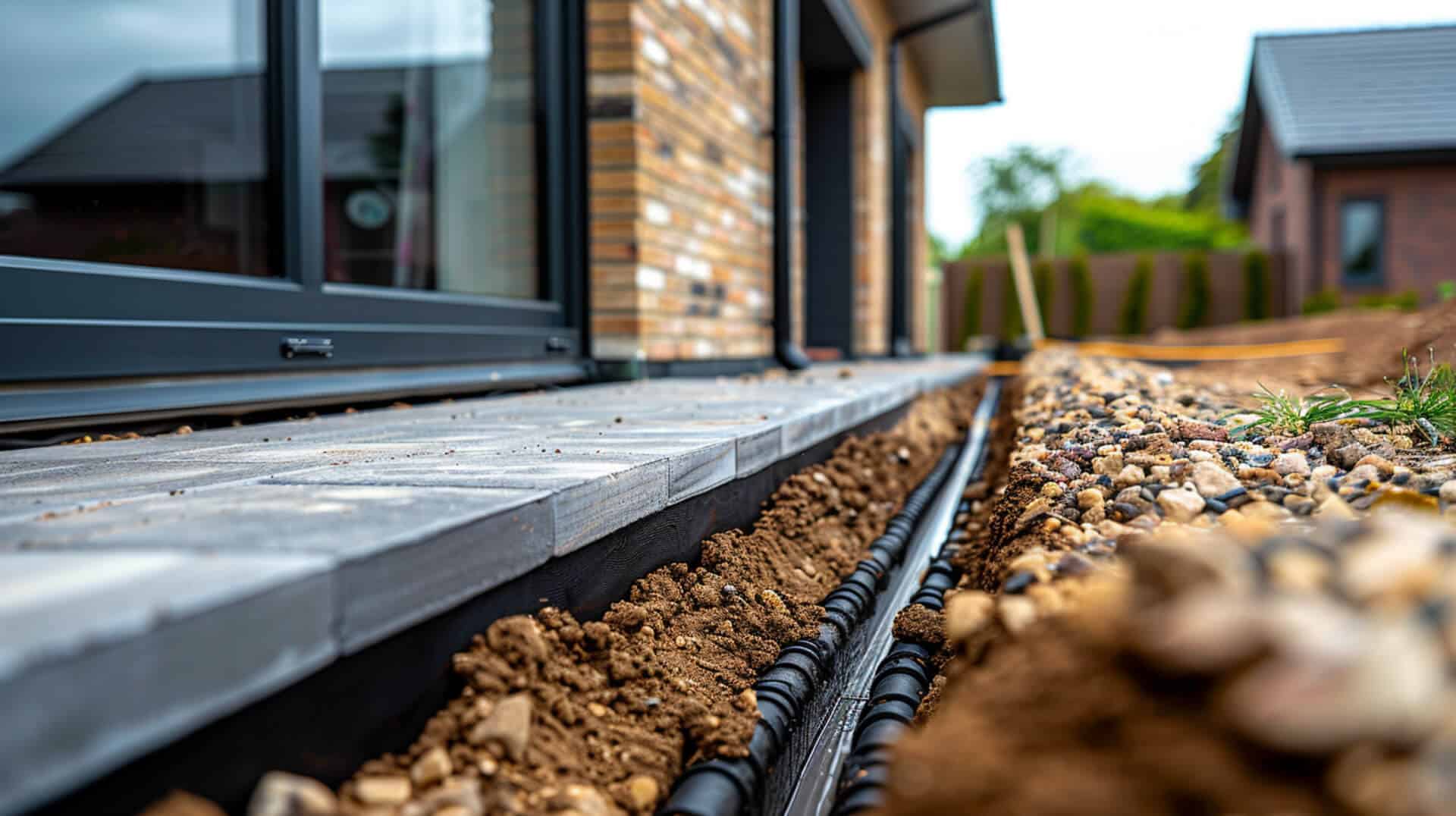
When planning the installation of a French drain, it is crucial to be aware of the legal and regulatory framework that governs such projects. Compliance with these regulations ensures the protection of water quality and adherence to safety standards.
Permits and Approvals
Depending on your location, the following may be required:
- Building Permits: Some regions require a permit for drainage work that alters the landscape or involves significant excavation.
- Environmental Approvals: If the drain affects wetlands or protected areas, additional environmental permits may be necessary.
Impact of Local Regulations
Local regulations can influence various aspects of French drain installation:
- Design Standards: Regulations may dictate the materials, depth, and slope of the drain.
- Property Boundaries: There may be restrictions on how close the drain can be to property lines or public infrastructure.
Importance of Stormwater Management
Ensuring contaminant-free stormwater management is vital for:
- Environmental Health: Prevents pollutants from entering local waterways.
- Community Safety: Reduces the risk of flooding and related hazards.
Consequences of Non-Compliance
Failure to comply with regulatory requirements can result in:
- Fines: Penalties for non-compliance can be substantial.
- Remediation Costs: You may be required to modify or remove non-compliant drainage systems at your expense.
By understanding and adhering to these legal and regulatory considerations, you can ensure that your French drain project is executed responsibly and sustainably.
Environmental Impact and Sustainability of French Drains
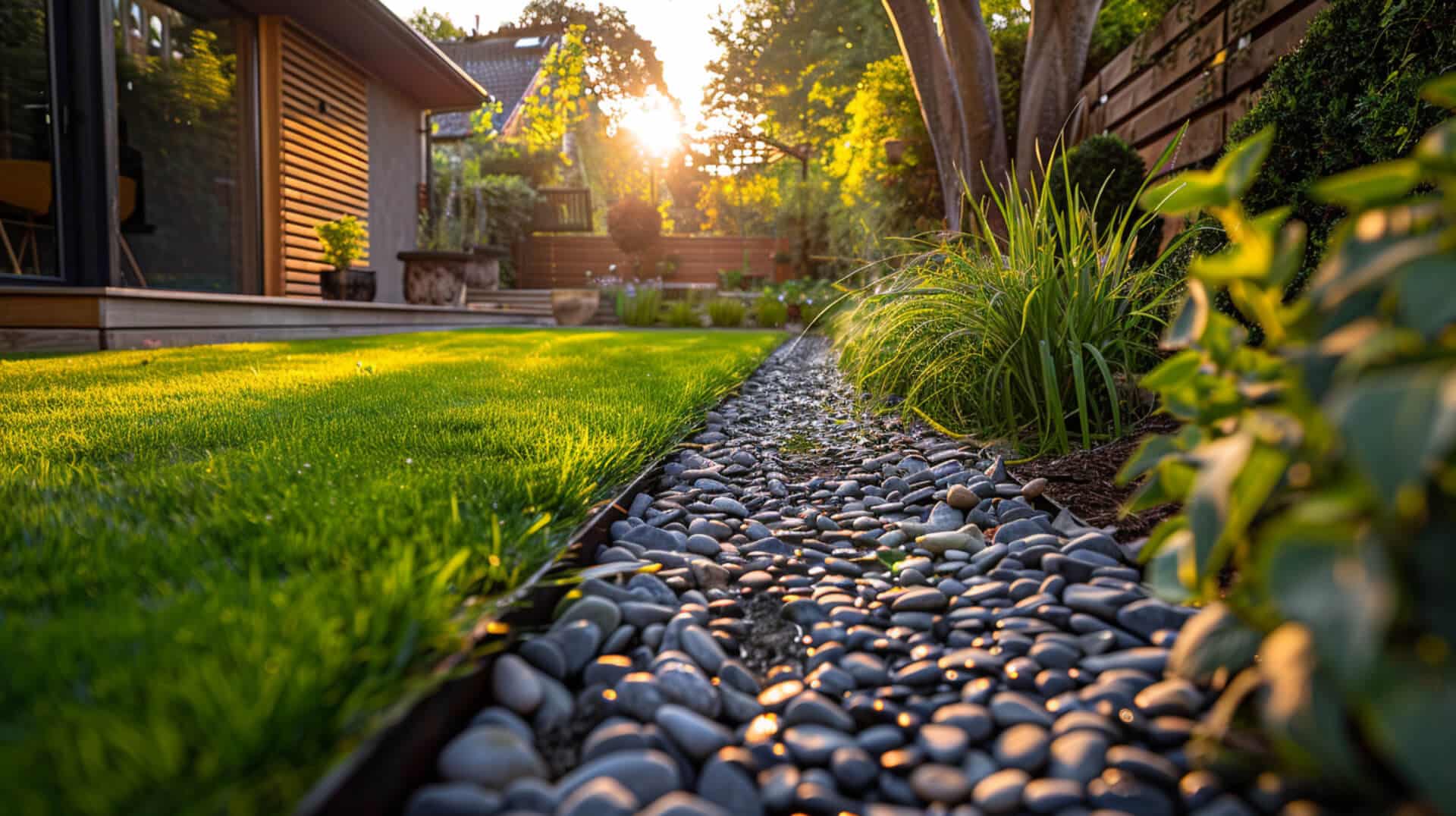
French drains, when designed and installed with consideration for the environment, contribute positively to sustainable water management and ecological health.
Sustainable Water Management Practices
French drains support sustainability by:
- Redirecting Water: They manage water runoff in a way that mimics natural hydrological patterns, reducing the strain on municipal stormwater systems.
- Recharging Groundwater: Properly routed French drains can help in directing water to areas where it can percolate and replenish groundwater reserves.
Minimising Toxic Runoff and Soil Erosion
The environmental role of French drains includes:
- Filtering Runoff: By directing water through layers of gravel and fabric, French drains can help philtre out contaminants before they reach water bodies.
- Preventing Erosion: They stabilise the soil by controlling water flow, which can otherwise lead to soil erosion and nutrient depletion.
Supporting Rain Gardens and Local Ecosystems
French drains enhance local ecosystems by:
- Maintaining Moisture Levels: They can be used to direct water to rain gardens, supporting plant growth and biodiversity.
- Balancing Water Distribution: Properly placed French drains ensure that water is evenly distributed, avoiding oversaturation or drought in different areas of the landscape.
Importance of Material Choice
Selecting the right materials for a French drain has a significant environmental impact:
- Eco-Friendly Materials: Non-toxic, sustainably sourced materials reduce the ecological footprint of the drainage system.
- Longevity and Efficiency: High-quality materials ensure the drain functions effectively for longer, reducing the need for repairs and minimising disturbance to the surrounding environment.
By considering these factors, French drains can be a valuable component of an environmentally responsible property management strategy.
Enhancing Property Value with French Drains
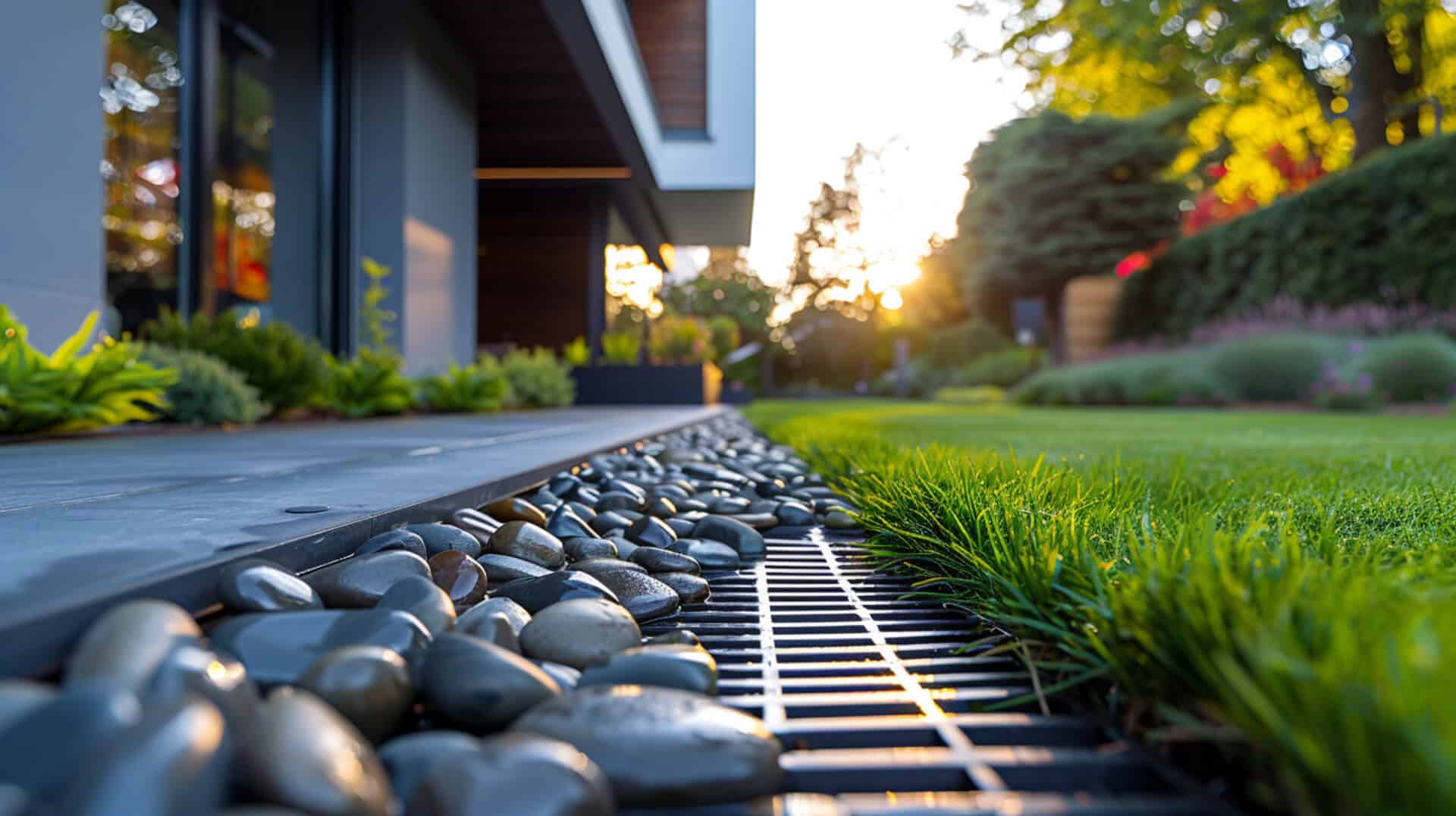
French drains are not only functional in managing water but also beneficial in enhancing property value. Their installation can be a prudent investment for property owners.
Protection Against Water Damage
French drains provide a robust defence against water damage by:
- Preventing Water Pooling: By redirecting water away from structures, these drains protect foundations from potential water damage.
- Mitigating Erosion: The system’s ability to control water flow helps preserve landscaping, a key factor in property aesthetics and value.
Long-Term Benefits for Property Owners
The installation of a French drain offers long-term advantages:
- Reduced Maintenance Costs: With proper installation and maintenance, French drains can minimise the need for costly repairs associated with water damage.
- Sustained Structural Integrity: By managing hydrostatic pressure, French drains help maintain the structural integrity of buildings and hardscapes.
Appeal to Potential Buyers
Effective water management systems like French drains are attractive to potential buyers because they:
- Demonstrate Care: Indicate proactive property maintenance.
- Offer Peace of Mind: Provide assurance against common water-related issues.
Aesthetic Integration into Landscape Design
French drains can be seamlessly integrated into landscape design by:
- Concealment with Vegetation: Overlying the drain with grass or ground cover maintains the natural beauty of the landscape.
- Decorative Elements: Using decorative gravel or stones can enhance the visual appeal of the drainage area.
By considering these aspects, French drains can be a valuable addition to any property, combining functionality with an increase in aesthetic and economic value.
Key Takeaways on French Drain Functionality and Benefits
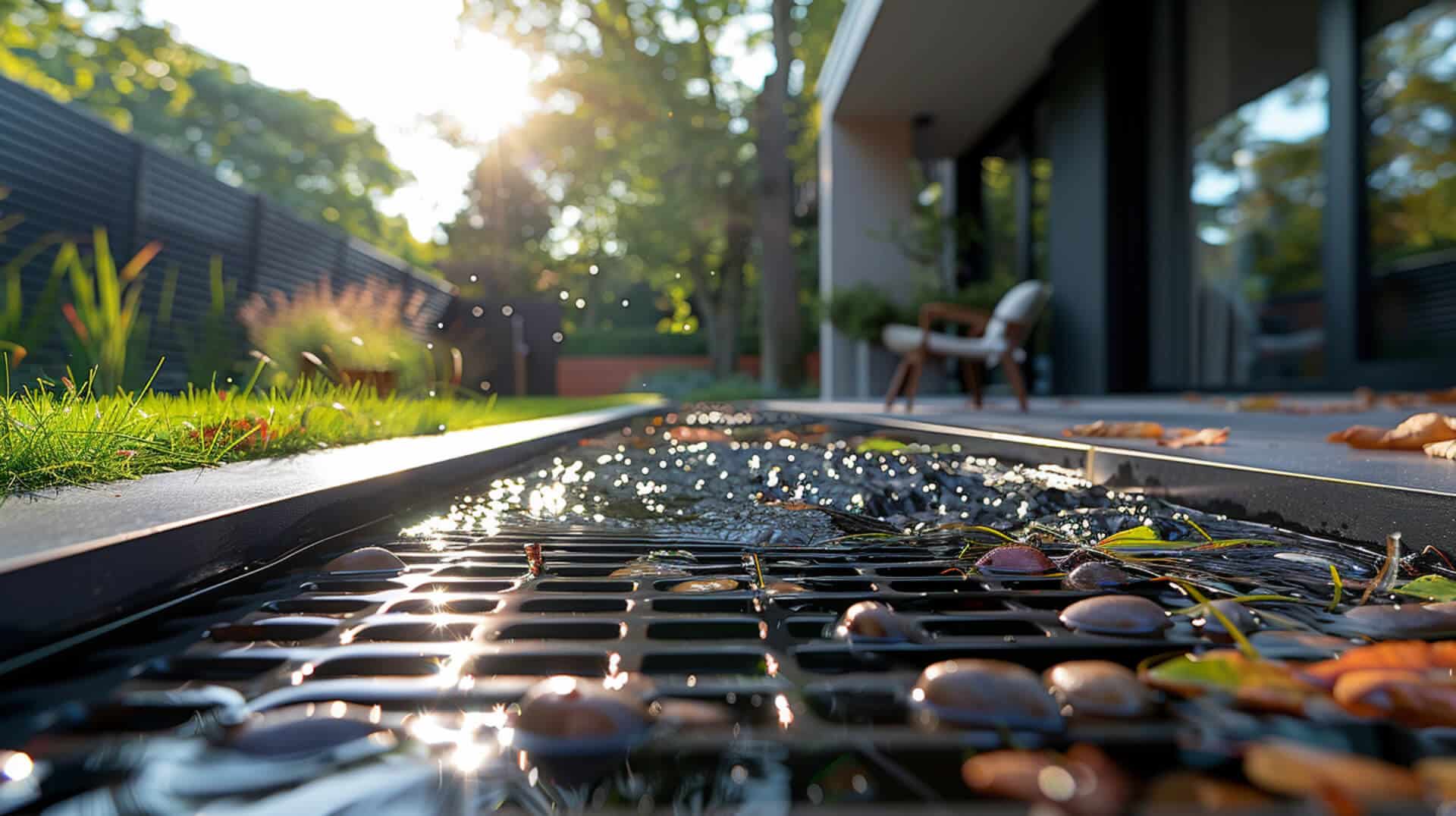
French drains are a time-tested solution for managing excess water in residential and commercial properties. They offer a discreet and effective means of protecting structures and landscapes from water damage. Here are the essential points to remember:
- Water Management: French drains efficiently redirect water away from buildings and prevent pooling in landscapes.
- Foundation Protection: They are instrumental in safeguarding the foundation of structures from water-induced deterioration.
- Landscape Preservation: By managing water flow, French drains help to prevent soil erosion and maintain the health of gardens and lawns.
The Importance of Planning and Execution
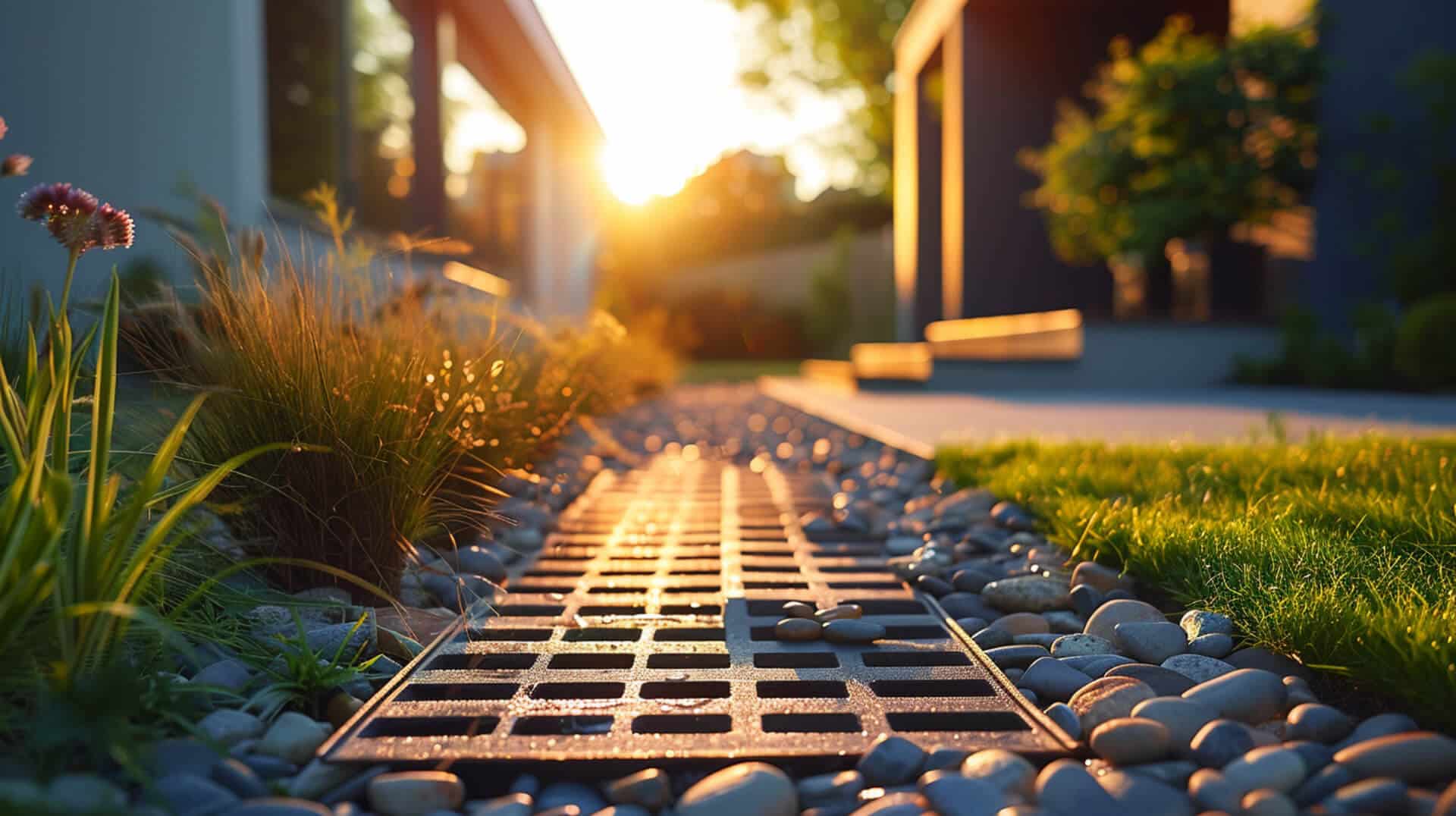
Proper planning and execution are critical for the success of a French drain system:
- Design Considerations: Correct slope, material selection, and placement are vital to ensure the drain functions as intended.
- Avoiding Utilities: Careful mapping to avoid underground utilities can prevent costly damages and ensure safety.
French Drains in Property Management and Environmental Stewardship
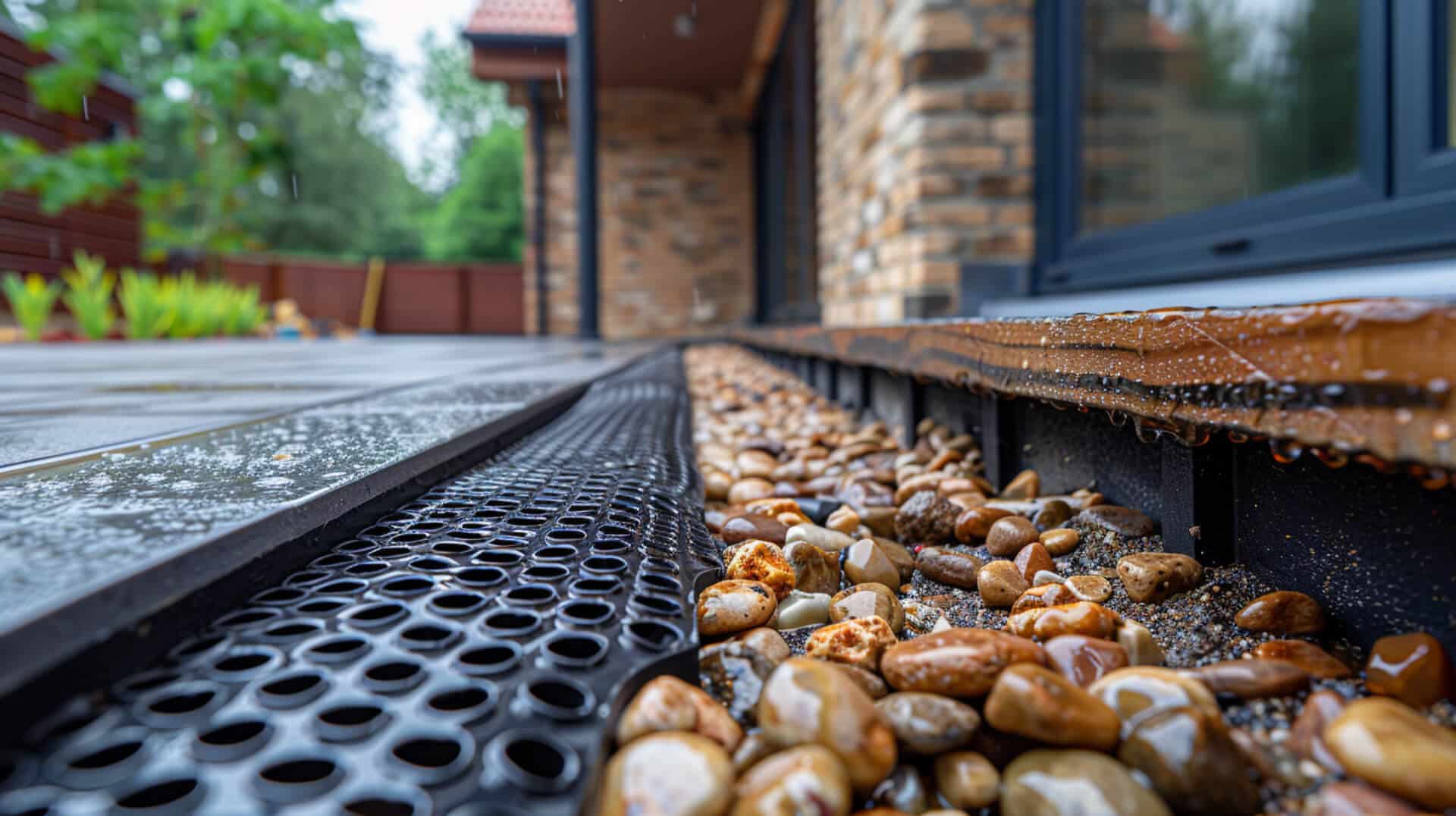
French drains play a significant role in property management and environmental conservation:
- Sustainable Practices: They support eco-friendly water management by reducing runoff and promoting groundwater recharge.
- Property Value: A well-maintained French drain system can enhance the value and appeal of a property.
Steps to Begin French Drain Installation
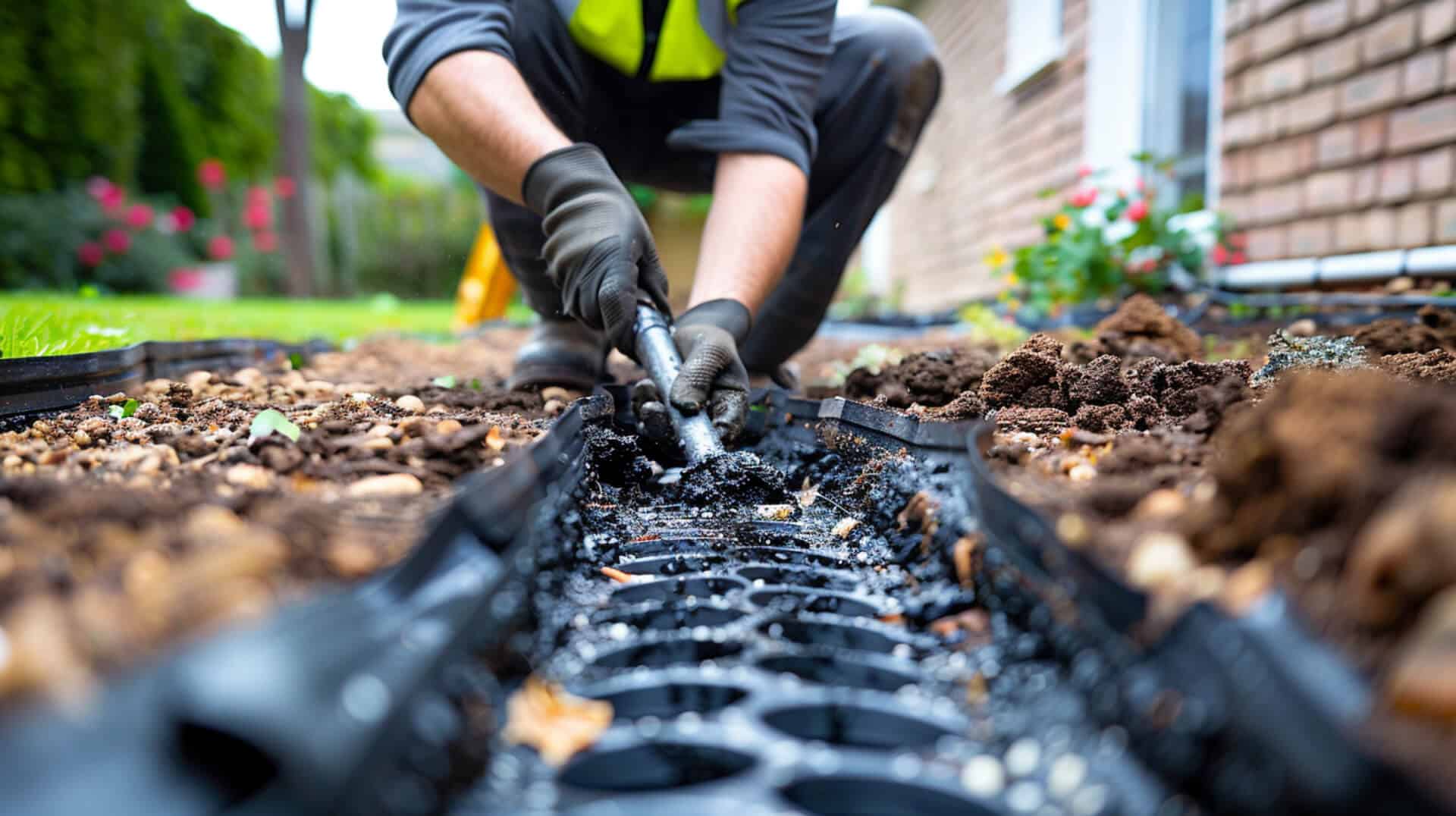
For property owners considering a French drain, the following steps are recommended:
- Assessment: Evaluate the water management needs of your property.
- Research: Understand the local regulations and requirements for drainage systems.
- Consultation: Seek professional advice to ensure the system is designed and installed correctly.
By following these guidelines, you can embark on the installation of a French drain with confidence, knowing that you are making an informed decision that will benefit your property in the long term.
